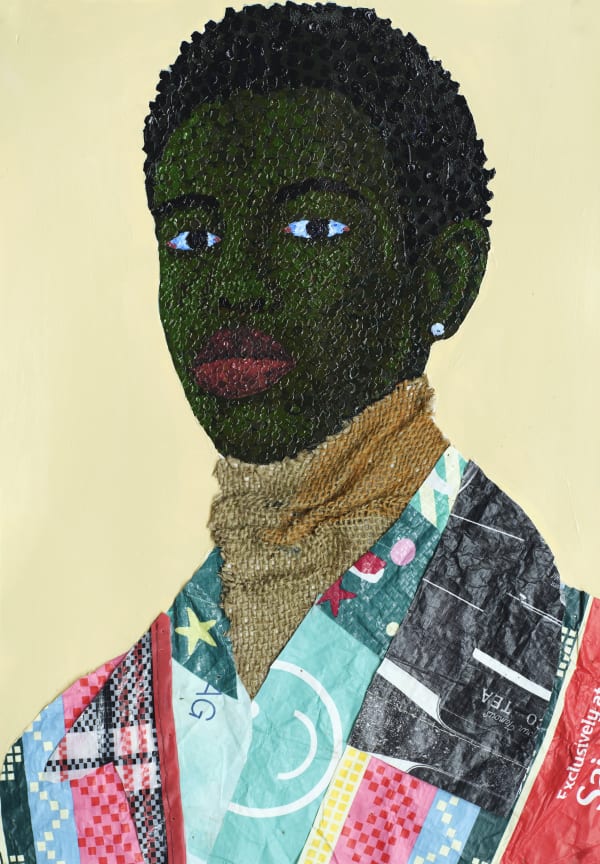For the 2024 edition of Untitled Art Miami, Gallery 1957 proudly presents a solo booth of new works by visual artist Kwaku Yaro.
Born and raised in Labadi, a coastal fishing community in Accra, Yaro’s practice transforms the significant creative objects and social life in Ghanaian society, adapting polypropylene mats, carrier bags, and jute sacks into an engaging and thought-provoking dialogue with his audience.
Materials once disregarded, are now celebrated as vibrant agents of expression. Yaro's exploration of waste and materiality finds a counterpart in his use of upcycled materials. These transformed materials not only tell a story of resourcefulness and environmental consciousness, but also interrogate the cycle of production, consumption, and substantiality between Africa and the rest of the world. Yaro’s distinctive narratives are a stark reflection of similar instances, incorporating plastic bags from the UK which have very distinct symbols, imagery and text that reflect the popular culture of the UK,and the colloquially named "Ghana Must Go”bag. With its distinctive checkered pattern, the "Ghana Must Go” bag became a symbol of migration, resilience, and the complex relationship between Ghana and Nigeria.
What emerges are captivating portraits embedded into polypropylene mats, highlighting the multifaceted history and utility of Yaro’s chosen materials. Predominantly manufactured in India, China, Malaysia, Turkey, Pakistan, Egypt and Côte d'Ivoire, these mats and bags have found a home in the hearts of the everyday Ghanaian.
Using his signature lush green pointillism style in the timeless medium of acrylic paint, he also interweaves a very intricate hand embroidery technique, contrasting industrial and mechanical production with traditional manual weaving often associated with local craftsmen. Yaro’s works evoke both a sense of place and the very souls of his subjects.
The democracy of materials within Yaro's work invites us to reconsider our notions of the many possibilities in art. It challenges the hierarchy of materials in the art world, where traditional canvases and paints have often taken precedence and reigned. It provokes an intuition to embrace our role in this agency, as well as a testament to contemporary art's ability to transform the unnoticed, mundane, and every day into critical discourse and visibility.


